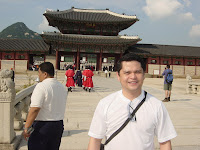The Historic Center of Macau

The Historic Center of Macau is a collection of over twenty locations that witness the unique assimilation and co-existence of Chinese and Portuguese cultures in Macau, a former Portuguese colony. It represents the The Historic Center of Macau architectural legacies of the city's cultural heritage, including monuments such as urban squares, streets-capes, churches and temples. In 2005 the Historic Center of Macau was inscribed on the UNESCO World Heritage List, making it the 31st designated World Heritage site in China. It was described by UNESCO as: "with its historic street, residential, religious and public Portuguese and Chinese buildings, the historic centre of Macao provides a unique testimony to the meeting of aesthetic, cultural, architectural and technological influences from East and West," and "...it bears witness to one of the earliest and longest-lasting encounters between China and the West, based on the vibrancy of international trade." Most of th...






